Daniel Töws
Using LLMs in your Product
#1about 2 minutes
Three pillars for integrating LLMs in products
The talk will cover three key areas for product integration: using the API, mastering prompt engineering, and implementing function calls for external data.
#2about 3 minutes
Making your first OpenAI API chat completion call
This section covers the basic code structure for making a chat completion request, including the different message roles and the stateless nature of the API.
#3about 3 minutes
Choosing the right LLM for your use case
Key factors for selecting a model include its training dataset cutoff date, context length measured in tokens, and the number of model parameters.
#4about 5 minutes
Best practices for effective prompt engineering
Improve LLM outputs by writing clear instructions, providing context with personas and references, and breaking down complex tasks into smaller steps.
#5about 4 minutes
Understanding and defending against prompt injection
Prevent users from bypassing system instructions by reinforcing the original rules with a post-prompt at the end of the message history.
#6about 4 minutes
Giving LLMs new abilities with function calling
Function calling allows the LLM to request help from your own code to access external data or perform actions like searching a database.
#7about 2 minutes
Summary and resources for further learning
The talk concludes with a recap of core concepts and provides resources for advanced prompting techniques and retrieval-augmented generation (RAG).
#8about 7 minutes
Audience Q&A on practical LLM implementation
The Q&A covers practical concerns like managing context length, prompt testing costs, implementing function call logic, and ensuring reliable JSON output.
Related jobs
Jobs that call for the skills explored in this talk.
Matching moments
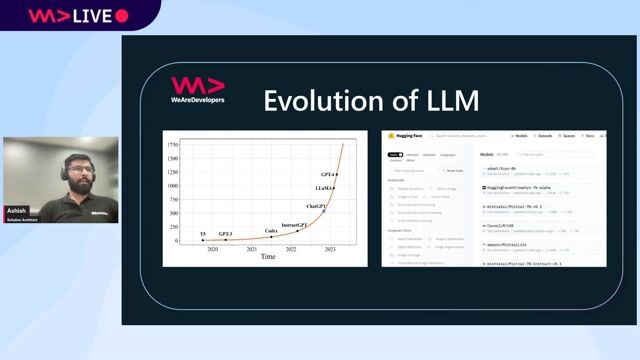
03:36 MIN
The rapid evolution and adoption of LLMs
Building Blocks of RAG: From Understanding to Implementation

10:29 MIN
Building custom applications with the OpenAI chat API
Develop AI-powered Applications with OpenAI Embeddings and Azure Search
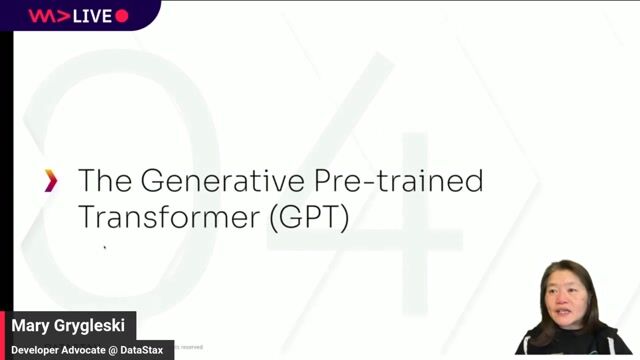
23:35 MIN
Defining key GenAI concepts like GPT and LLMs
Enter the Brave New World of GenAI with Vector Search
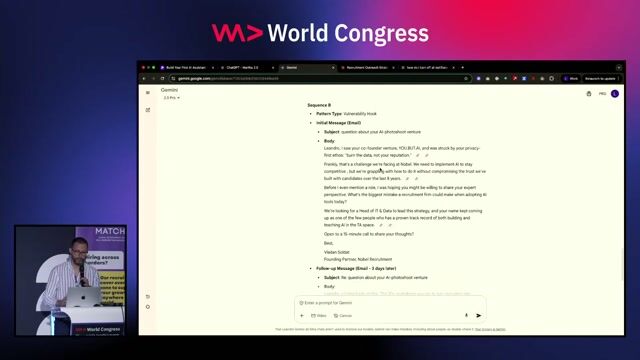
16:54 MIN
Comparing LLM performance and planning next steps
Build Your First AI Assistant in 30 Minutes: No Code Workshop

04:04 MIN
Understanding ChatGPT's capabilities and limitations
ChatGPT: Create a Presentation!
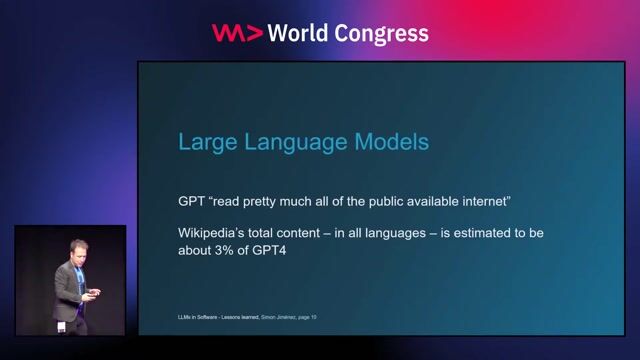
09:21 MIN
Viewing LLMs as a new kind of API
Three years of putting LLMs into Software - Lessons learned
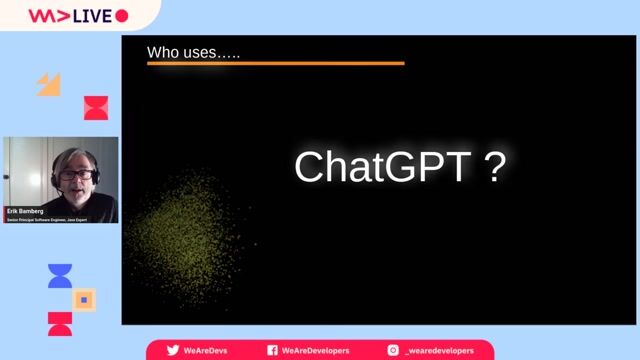
02:22 MIN
Understanding the limitations of large language models
What comes after ChatGPT? Vector Databases - the Simple and powerful future of ML?

09:55 MIN
Shifting from traditional code to AI-powered logic
WWC24 - Ankit Patel - Unlocking the Future Breakthrough Application Performance and Capabilities with NVIDIA
Featured Partners
Related Videos
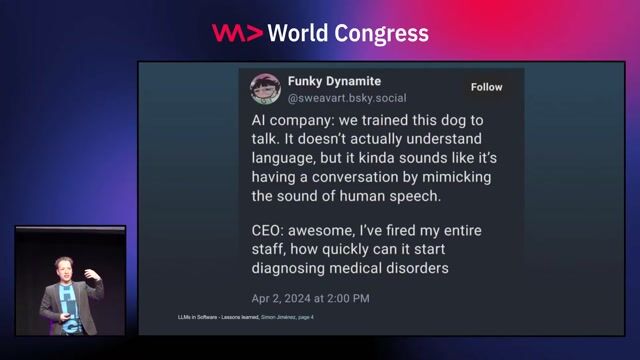 26:30
26:30Three years of putting LLMs into Software - Lessons learned
Simon A.T. Jiménez
 32:26
32:26Bringing the power of AI to your application.
Krzysztof Cieślak
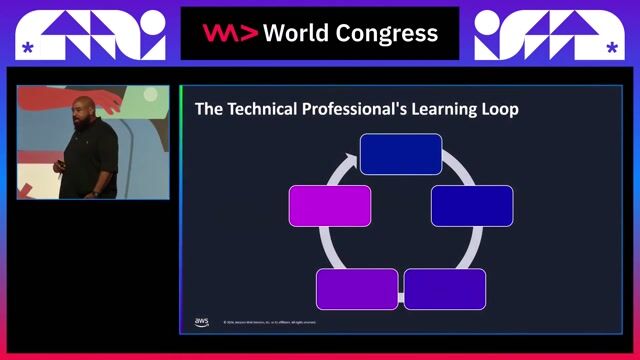 26:54
26:54Make it simple, using generative AI to accelerate learning
Duan Lightfoot
 25:17
25:17AI: Superhero or Supervillain? How and Why with Scott Hanselman
Scott Hanselman
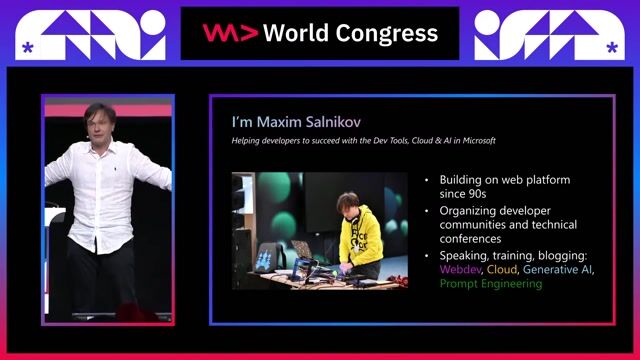 33:28
33:28Prompt Engineering - an Art, a Science, or your next Job Title?
Maxim Salnikov
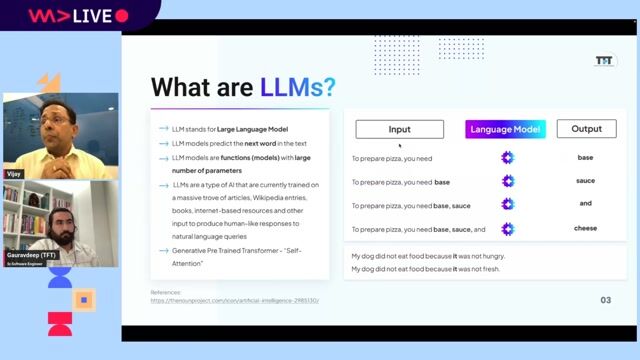 58:00
58:00Creating Industry ready solutions with LLM Models
Vijay Krishan Gupta & Gauravdeep Singh Lotey
 28:38
28:38Exploring LLMs across clouds
Tomislav Tipurić
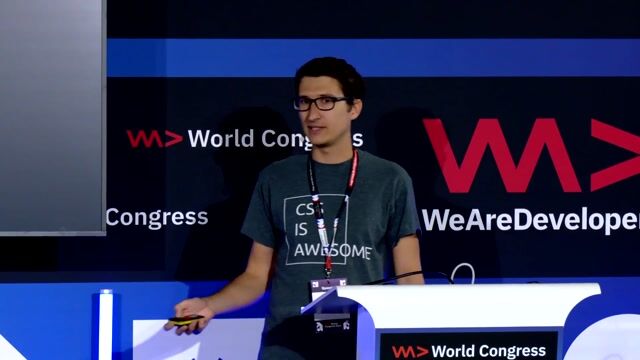 29:50
29:50OpenAPI meets OpenAI
Christopher Walles
From learning to earning
Jobs that call for the skills explored in this talk.

Senior AI Software Developer & Mentor
Dynatrace
Linz, Austria
Senior
Java
TypeScript
AI Frameworks
Agile Methodologies

Machine Learning Engineer
Picnic Technologies B.V.
Amsterdam, Netherlands
Intermediate
Senior
Python
Machine Learning
Structured Query Language (SQL)

AIML -Machine Learning Research, DMLI
Apple
Python
PyTorch
TensorFlow
Machine Learning
Natural Language Processing


Full-Stack Engineer | Specializing in LLMs & AI Agents
Waterglass
Junior
React
Python
Node.js
low-code
JavaScript

Data Scientist- Python/MLflow-NLP/MLOps/Generative AI
ITech Consult AG
Azure
Python
PyTorch
TensorFlow
Machine Learning


